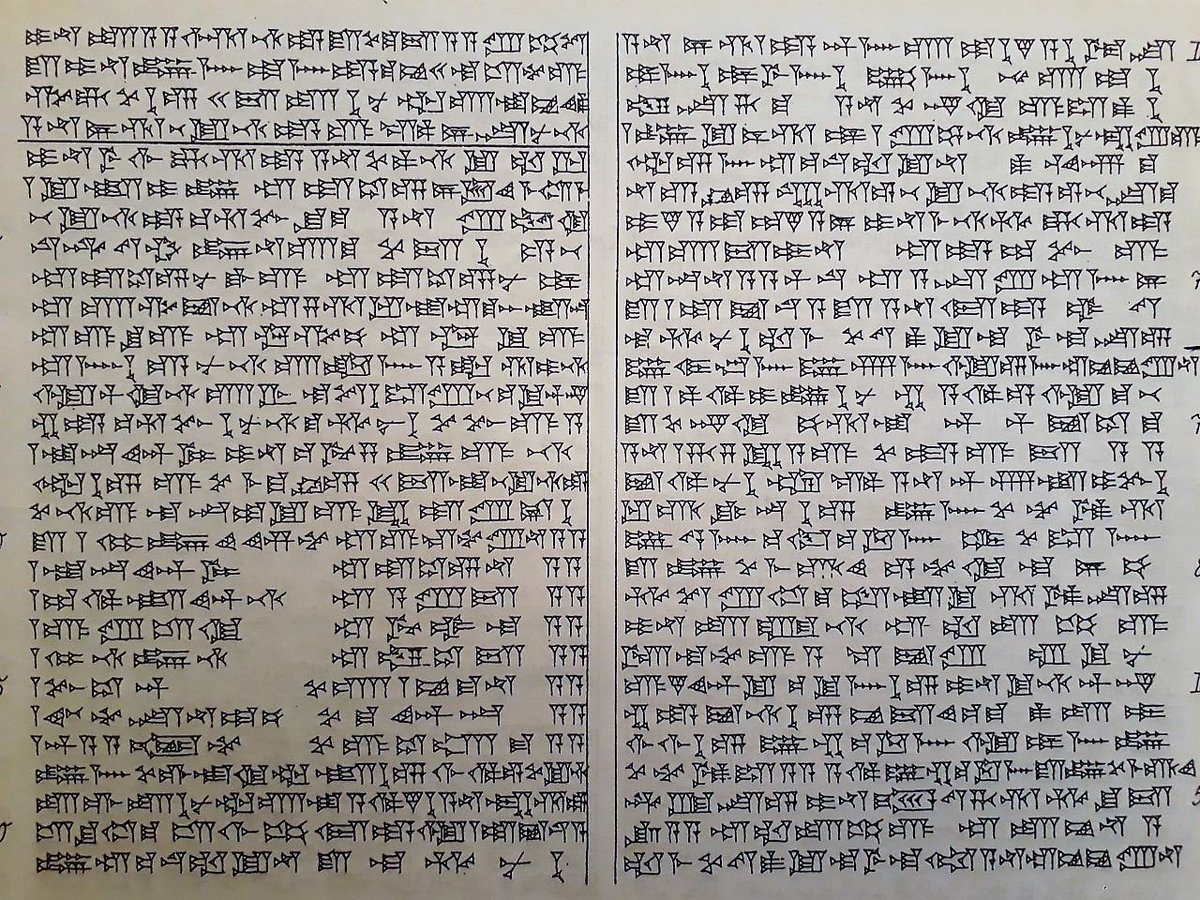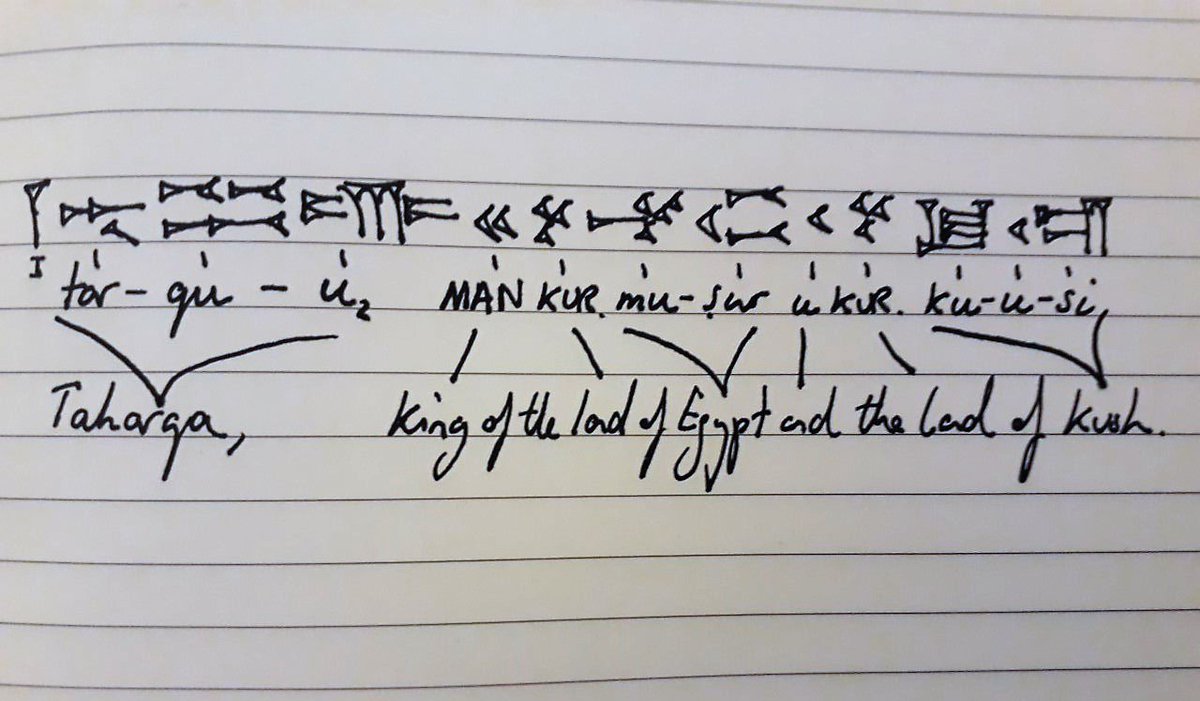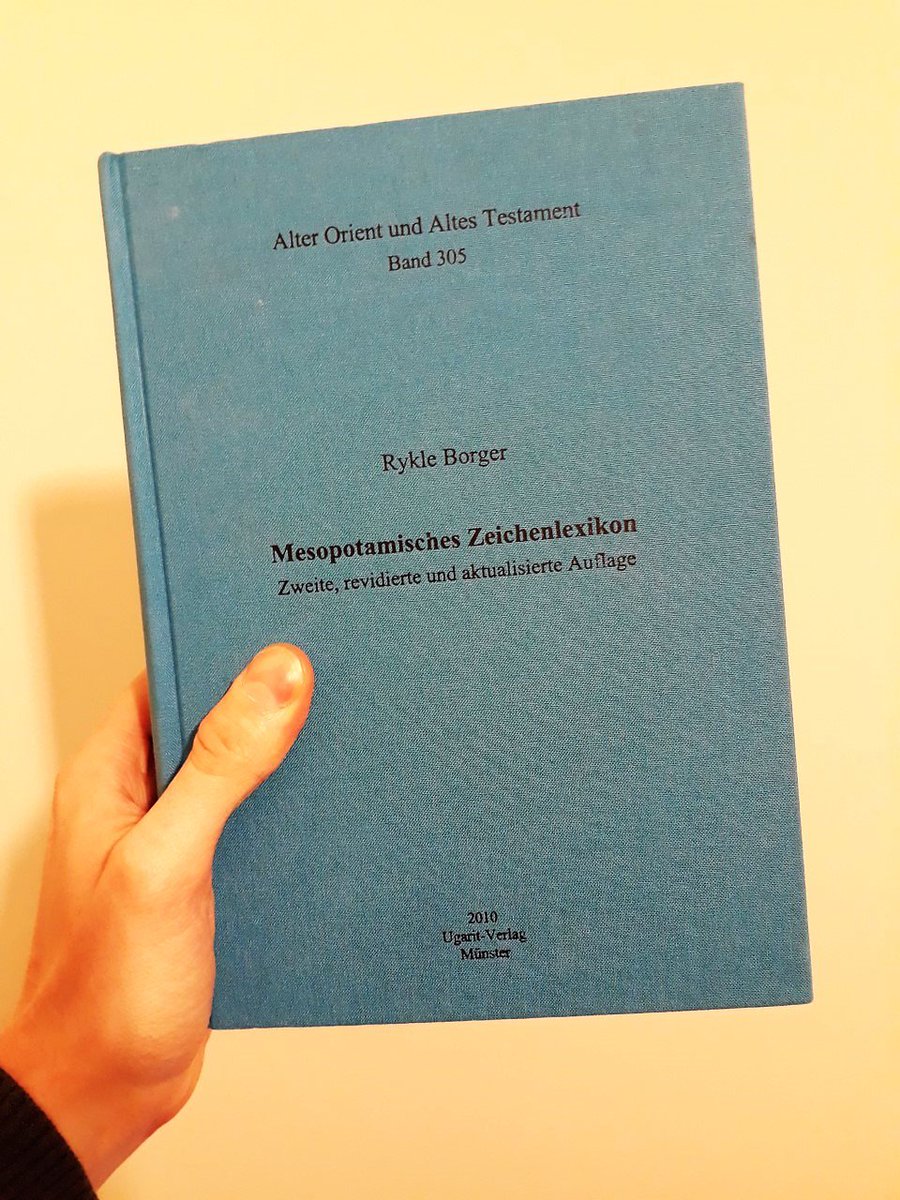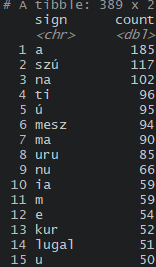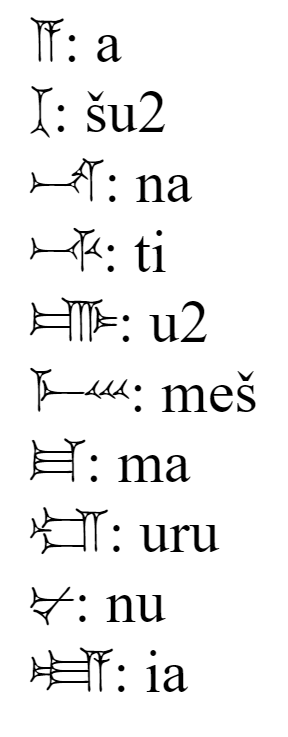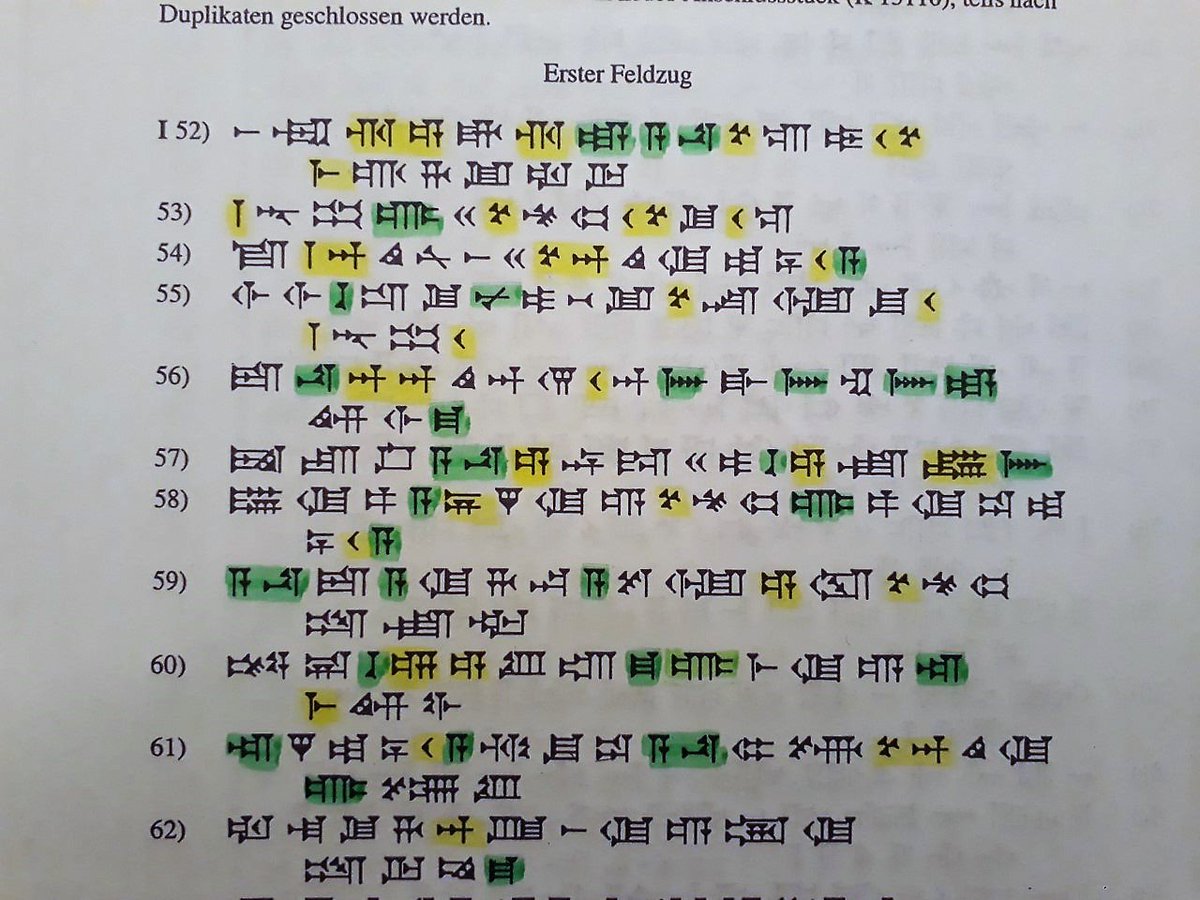The thought of having to learn hundreds of cuneiform signs can be quite off-putting for students interested in ancient Mesopotamian languages and history – but how many signs do you actually need to learn in order to read, for example, Akkadian? A THREAD...
(Quickly, for those who don’t know, cuneiform signs can write out the syllables of a language, stand for whole words, or for unspoken determinatives, and each sign can have lots of different potential readings)
The most widely used sign-list for Akkadian lists 907+ cuneiform signs, which, given a lot of signs have multiple readings, means that if you wanted to know *EVERYTHING*, then you’d have to learn thousands of sign readings, but never fear…
You don’t need to know *EVERYTHING* when you start (and probably never will). The set-texts read from cuneiform for the @CAssyriology first year undergraduate Akkadian exam use a total of 385 sign-readings (from 235 signs). A lot less than 907, but still a lot, right?
If (like me) you’d spent your whole life up until you started Akkadian only reading languages written with roughly 26 letters, then being given a cuneiform sign list of 235 signs and 385 sign-readings can be terrifying! Where do you start?!
Copying the texts (sections of Sennacherib& #39;s and Ashurbanipal& #39;s campaigns) from @opencuneiform then tokenising and counting the signs with @rstudio, it& #39;s easy to work out which signs are most worth learning...
There are 26 letters in a lot of alphabets, so how about starting by learning the 26 most popular cuneiform signs/readings? If you knew those, it turns out you’d already be able to read (or, I should say, transliterate) 48% of what’s written in these texts…
Learn the next 24 most popular, and you’d be able to read 63%…
By that point you know 50 sign-readings. Learn the next 50 and 80% of the text would be readable...
Learn the most popular half of the sign-readings (well, 193 of the 385) and you’re bossing it – you’d be able to read 92% of the text!
So don’t just randomly start learning signs from an unordered sign list – you may end up starting with the 217 of these sign readings that only show up three times or less, making up less than 10% of the text!
Making sign lists based on sign popularity is also useful for learning the different readings of a sign. It& #39;s all very well knowing that one sign can be read "u2", "šam", or "sam", but when you& #39;re panicking in an exam over which which reading is correct, how do you decide?
Don& #39;t just pick one at random! 97% of the time in these particular texts, "u2" is the right choice when faced with this sign (97 u2s, 2 šams, 1 sam). Sign popularity is important!
Ok so maybe you aren’t thinking of taking an Akkadian exam any time soon, but you’re still interested – learn these ten signs and you’ll be able to read out-loud 28% of these sections of text! (Sign-list made using @Rstudio, prettified using cuneify)
Warning, you won’t get many full words just with these 10 signs. In this picture I’ve highlighted the ten most popular signs in green, the next ten in yellow. It would probably help to learn the language itself too!
I should also reiterate, these lists and numbers aren’t definitive for the whole of the Akkadian language, just for the sections of Sennacherib and Ashurbanipal’s inscriptions that I fed into R!
To end: sign-lists made in order of decreasing popularity show you which signs and readings to prioritise, but other types of sign lists are also helpful! Borger& #39;s "100 easy signs", for example, groups signs together that look similar to each other, which is v useful!

 Read on Twitter
Read on Twitter